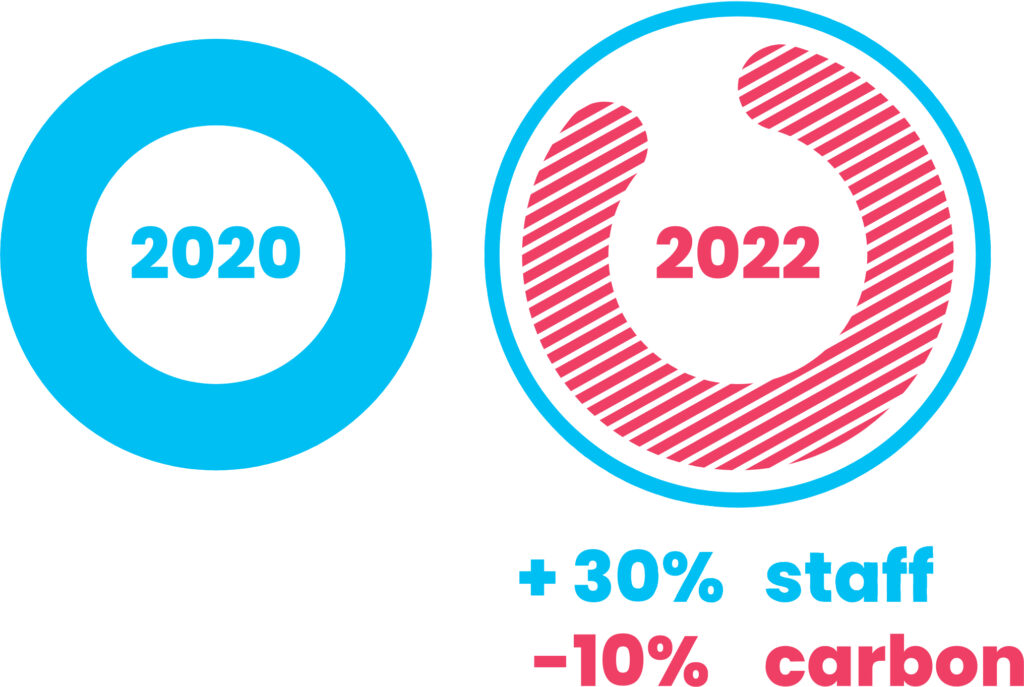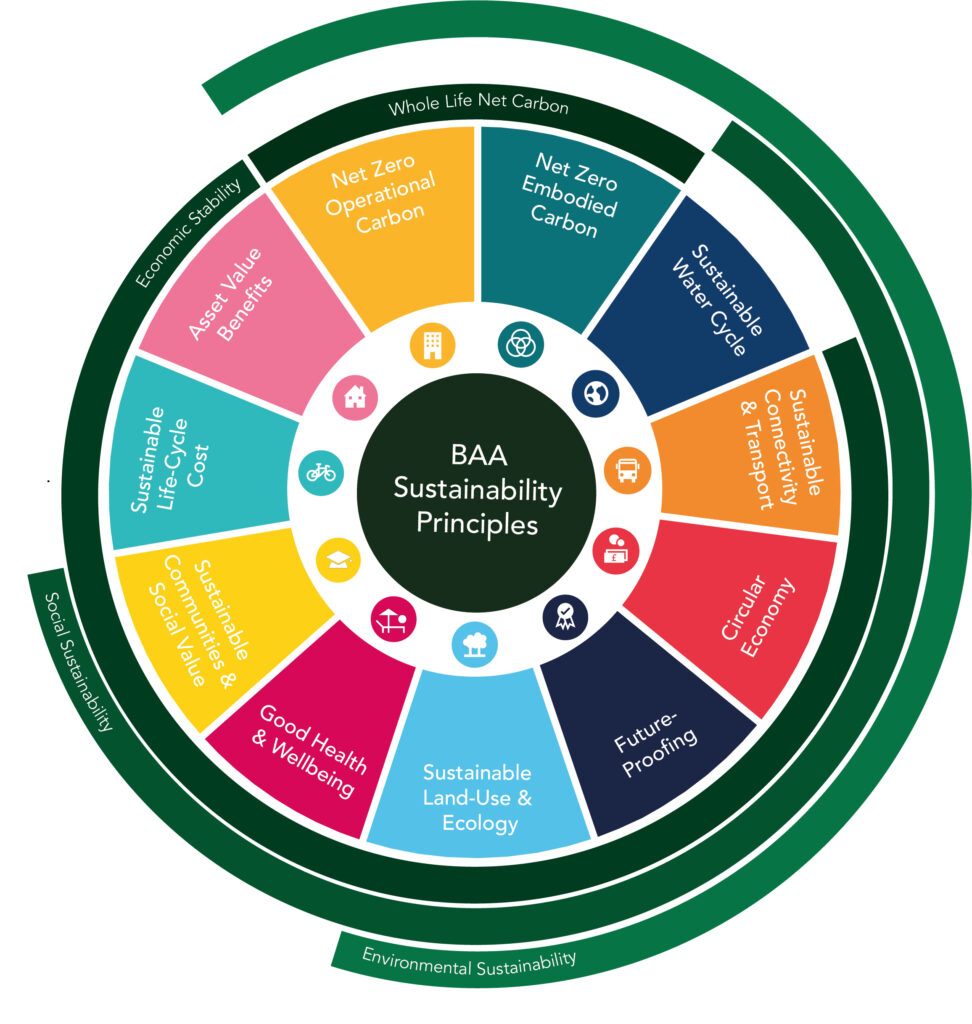Carbon and its reduction as we move to a Net Zero world is the topic for the 2020’s.
As architects we champion best practice in sustainable design, leading our industry in the positive impact our work must have on the built environment. We started our Net Zero campaign by making our own company a Net Zero Carbon company. Find out how below.

We have remade the way we run our studios to reduce the carbon we generate and offset any carbon that remains. The journey to Net Zero is a simple one that any company can make. We worked out how much carbon we use in running our company. This is an analytical task to measure all the carbon in how we travel, the equipment we use and how our space is heated and cooled. There are many tools to help with this and we followed UK Green Building Council guidance on meeting Net Zero requirements.
Ben Adams, Founding Director of Ben Adams Architects
Look at your business from the ground up.
We think about the environmental, social, and commercial consequences of all the choices we make in business by collecting data on their impact. We take action in those areas in which we have the greatest impact. In simple terms we think this is the right way to run the practice.
Since 2020 we have Zero Landfill Waste through recycling more than 70% of our waste and using any that remains to generate electricity. We support low carbon energy by only using Net Zero electrical suppliers and so far we have reduced our carbon by 10% in the last twelve months while growing the practice.
We have invested in technology to make a paperless office and we have reduced carbon generated by paper recycling by 96%. Why not 100% you ask? We still print the occasional contract where our clients demand it but that demand is shrinking.

However good we all are at reducing our carbon emissions, some will remain. We breathe out carbon and some is generated in everyday activity that has to be accounted for and offset. Offsetting has a mixed record but the best schemes are a reliable way to offset your carbon in a sustainable and long term way. We did a deep dive on the carbon offset market to find a partner that provides real, measurable value to the UK environment.
We are pleased to announce that we chose Forest Carbon as our offset partner, whose woodland creation and peatland restoration projects for carbon capture are leading the UK in 2022. BAA’s investment in both international and UK-based scheme allows for a balanced commitment to offsetting our carbon footprint.
Investment in international projects offers immediate carbon sequestration through sustainable timber and rainforest protection and restoration schemes, whilst our investment in UK-based schemes provides support in the initial stages of forestation and peatland creation schemes in which carbon capture will be activated in the coming years.

Net Zero, then Innovate.
Our Sustainability Taskforce have the responsibility for monitoring how we run our practice, and for implementing innovative, measurable goals for the design life and beyond, of all our projects. They report monthly and form a key part of our Quality Management System to track carbon in the buildings we design as well as the studio we run. The taskforce guides each and every project team from the inception of a project to make sure Net Zero is baked in.

Sustainable design in every building.
Net Zero is a key part of sustainable design that also takes in climate change, wellbeing, commercial needs and re-use. Fewer new buildings are being commissioned as find ways to repurpose old ones and extend their life along with their building fabric. This is nothing new – we have been re-modelling buildings since we started the company in 2003. New technology allows any space to be used for any purpose, as long as it is an amazing space to be in, and an inspiring one to visit.
Reusing buildings, recycling materials, the circular economy and longer life are the critical themes in architecture for the next decade. Make sure your building is flexible in the future though great, adaptive design and you find the surest way to extend its life. We keep buildings we love and use them for something new, as any walk through London or any other UK city will prove.
Net Zero Now.
We believe all buildings should be designed to achieve Net Zero Carbon by 2025 if the RIBA climate challenge is to be a reality by 2030. BAA is committed to exceeding the RIBA 2030 Climate Challenge as we approach a Net Zero Carbon future for all our buildings.
All this means that, as a practice, we are well equipped to operate in order to meet and where possible, exceed any sustainability expectations of our governing bodies and clients. And we are proud of it!
